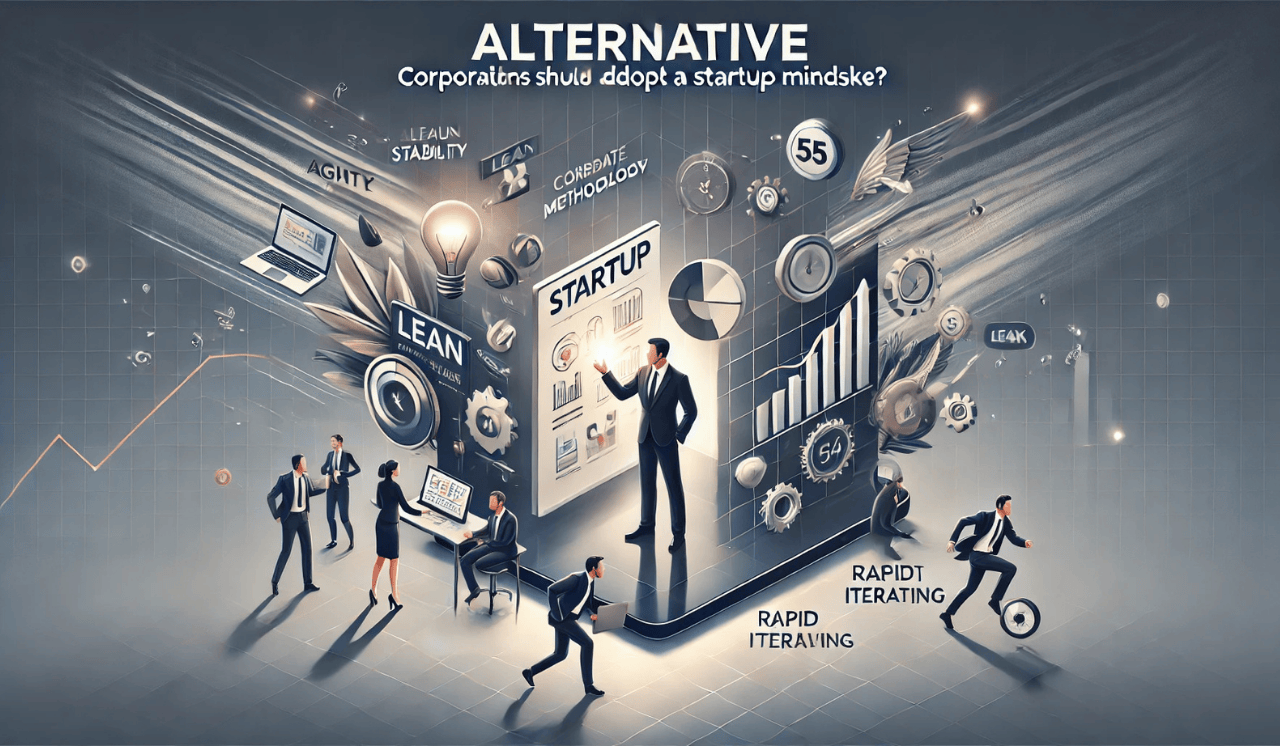
90% of the people we have interviewed indicated that their organization’s innovation capability is hampered by a lack of speed and flexibility. It’s tempting to look at start-ups (and how they organize themselves) in an attempt to copy their strengths to your large corporate organization. Heck, even some consultancy firms will state that corporates should act as start-ups in order to achieve success in their innovation efforts. We disagree and I would like to share our vision on the matter.
Transforming your company to a start-up is mission impossible.
And you shouldn’t feel sad about it.
Start-ups are cool. They are energized. They are bold. They head for their goals at full speed. They also have the flexibility to change course quickly and they can be more easily forgiven overselling the product they are trying to launch in the market. Sell first, build later.
We love working in start-ups and truly enjoyed coaching them to increase their maturity. We still like to work and partner with start-ups because of their open mindedness, enthusiasm and flexibility.
There are some catches however.
From our experience, they don’t know where they’re going most of the time. The so envied flexibility and pace of change often belies a desperate but best effort attempt at trying to find a product market fit as soon as possible.
There’s no time to understand the problem of the beloved customer before starting to build the new version of the product they’re already in love with. Time’s their worst enemy and new investment rounds are needed all the time.
A team that is made of only enthusiastic, young, energized people is great to work with but the lack of experience doesn’t necessarily lead to success faster. Some start-ups fail, just because they overlook the boring stuff.
They often lack a structured approach to deliver results with an acceptable quality as fast as possible. A plan or prioritized backlog. Say what?
Most start-ups fail. Just google: “percent start-ups fail”.
I got over a million search results with percentages varying between 70 & 90 %.
Honestly, your company can’t afford to copy the full start-up way of working. You have a reputation to think of and someone will probably be looking over your shoulder. Going out to buy t-shirts, shorts and sneakers for your team and start hitting the rollercoaster tomorrow is probably not going to do you any good.
However, there are some things we can learn from start-ups. And surely, we all need the flexibility to get (the right) things done faster without the drag we created in our corporate structures in order to manage the ever growing complexity of the digital revolution.
If someone can tell me he is able to realize an innovation project in fewer than 6 months by going through the standard budget rounds, team composition exercises and standard governance processes, I would love to hear the story.
So, if we can’t copy how start-ups work to our organizations, what can we do?
In part 2 of this blog post, I will share the way we run incubation (innovation within AE) with you. I promise that what we’ve learned from working with start-ups and corporates will be part of the mix.
Thanks for reading. As always, I look forward to your thoughts and comments.
And remember, sharing is caring.







